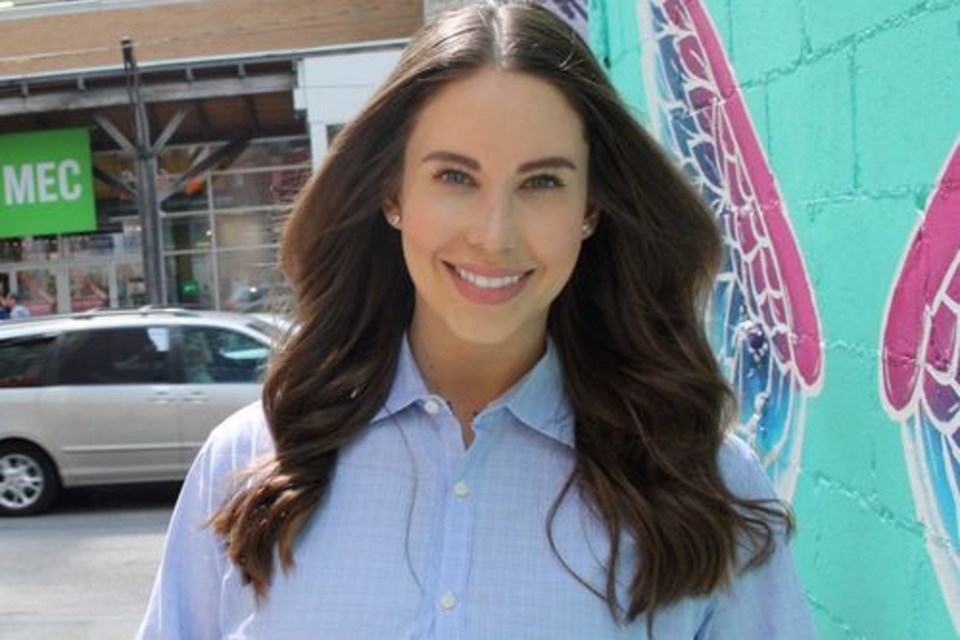Dr. Sarah Saska is the co-founder and CEO of Feminuity, a full service diversity, equity and inclusion (DEI) consulting firm.
As the Halton District School Board (HDSB) struggles with calls to provide a dress code for teachers in its schools, Dr. Saska shared some of her thoughts as a DEI professional, on how workplace standards are changing with BurlingtonToday.
How is workplace attire changing?
"Expectations around professional dress are changing in many ways. Many organizations, particularly in the tech field and artistic spaces, adopt a more casual dress code that simply bans clothing with hate speech, hate symbols, or offensive language. Beyond more casual workplaces, other offices are creating policies that are more multiculturally inclusive of forms of professional dress throughout the world.
"There has also been a lot of positive change and discussions around inclusivity regarding different hairstyles, hair accessories, and hair textures (e.g. dreadlocks, braids, curls, cornrows, Bantu knots, Afros and headwraps), particularly those common among Black women who have shared experiences of their hair being unfairly stigmatized in professional spaces. There is even proposed legislation to be more inclusive like the CROWN Act in the United States."
Should there be special considerations/guidelines for workplaces dealing with children?
"In certain respects, having additional considerations in environments that have children makes sense, but this must be balanced with the expectation that dress codes should not strive to enforce every parent or caregiver’s unique sensibilities or views around what is appropriate.
"It goes without saying, that children should not be exposed to sexually charged spaces, but this should not be mistaken with the idea that children should not be interacting with openly LGBTQIA2+ personnel or administrators which simply represent another natural variation of the human experience. LGBTQIA2+ professionals should be recognized as valued members of our communities."
What are some of the ways a dress code can be sexist, sizeist or ableist?
"Dress codes can be sexist when they impose more robust guidelines for women and feminine-presenting people than they do men. Certain organizations and institutions create policies with paragraphs of expectations for women, and minimal expectations for men. Another way that a dress code can be sexist is when there is no gender-neutral option to choose from, or when women and men are forced to wear a certain uniform based on their gender without being given the choice to choose whichever uniform feels most affirming.
"Dress codes can be sizeist when they police people of larger builds more intensely, just due to the unique shape or size of their body. We often find that women of larger sizes share experiences of being more closely monitored and criticized for what they wear, just because they have larger breasts or hips for example.
"A dress code can be ableist when it has very limiting and restrictive options that make it hard for people of different abilities to wear clothing that is compatible with their assistive technologies (e.g. wheelchairs), conditions (e.g. adaptive shoes), or unique sensory sensitivities since certain fabrics can be distressing for neurodivergent people."
How can dress codes exclude gender non-conforming people?
"For one, many dress codes only elaborate guidelines for men and for women, which erases non-binary and nonconforming altogether from the conversation and forces them to choose between two options where neither feels totally authentic or comfortable.
"Another way they can exclude non-binary and nonconforming people is that they will be deemed unprofessional simply for wearing something that defies gender conventions, and in this case, strictly adhering to gender norms is conflated with what it means to be professional or dressed appropriately.
"Finally, even in a dress code that purports itself to be "gender neutral", its guidelines can be very limiting and rely on stereotypical notions of masculine or feminine dress, even while enabling people to choose whichever option feels best. The problem is that there are not any explicit options that blend or exist outside of these stereotypes."
Are there not parts of our expressing ourselves that should remain in the bedroom/our own homes?
"What’s important is that we have meaningful boundaries between someone just existing and us sexualizing them unfairly which is often the case for LGBTQIA2+ people. We should be more concerned about people intentionally being sexually provocative, making inappropriate jokes or gestures, or committing acts of sexual harassment in the workplace."
Do you believe HDSB can deal with this matter through a professional dress code? Why or why not?
"There are many layers to this complex, nuanced and multifaceted situation that goes beyond the need for a professional dress code. However, the HDSB has an opportunity to be intentional in their approach — co-creating a policy that is inclusive of people of all different backgrounds, identities, communities and lived experiences. In both the situation at hand and more generally, dress code policies are only one tool in creating a truly inclusive workplace."

